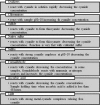Cyanides in the environment-analysis-problems and challenges
- PMID: 28512706
- PMCID: PMC5506515
- DOI: 10.1007/s11356-017-9081-7
Cyanides in the environment-analysis-problems and challenges
Abstract
Cyanide toxicity and their environmental impact are well known. Nevertheless, they are still used in the mining, galvanic and chemical industries. As a result of industrial activities, cyanides are released in various forms to all elements of the environment. In a natural environment, cyanide exists as cyanogenic glycosides in plants seeds. Too much consumption can cause unpleasant side effects. However, environmental tobacco smoke (ETS) is the most common source of cyanide. Live organisms have the ability to convert cyanide into less toxic compounds excreted with physiological fluids. The aim of this paper is to review the current state of knowledge on the behaviour of cyanide in the environment and its impact on the health and human life.
Keywords: Cyanide determination; Cyanide in food; Cyanide ion; Cyanide toxicity; Cyanides in the environment; Tobacco smoke.
Figures











References
-
- Abbasi S, Valinezhad R, Khani H. A novel kinetic spectrophotometric method for the determination of ultra-trace amount of cyanide. Spectrochim Acta A. 2010;77:112–116. - PubMed
-
- Abdullah BM, Salimon J, Yousif E, Salih N. Occurrence of cyanogenic glycoside and cyanide in the Malaysian rubber seed oil. Journal of the Association of Arab Universities for Basic and Applied Sciences. 2013;14:83–86.
-
- Absalan G, Asadi M, Kamaran S, Torabi S, Sheikhian L. Design of cyanide ion optode based on immobilization of a new Co(III) Schiff base complex on triacetylcelluose membrane using room temperature ionic liquids as modifiers. Sensors Actuators B Chem. 2010;147:31–36.
-
- Akintonwa A, Tunwashe O, Onifade A. Fatal and non-fatal acute poisoning attributed to cassava-based meal. Acta Hort. 1994;375:285–288.
Publication types
MeSH terms
Substances
LinkOut - more resources
Full Text Sources
Other Literature Sources
Research Materials

